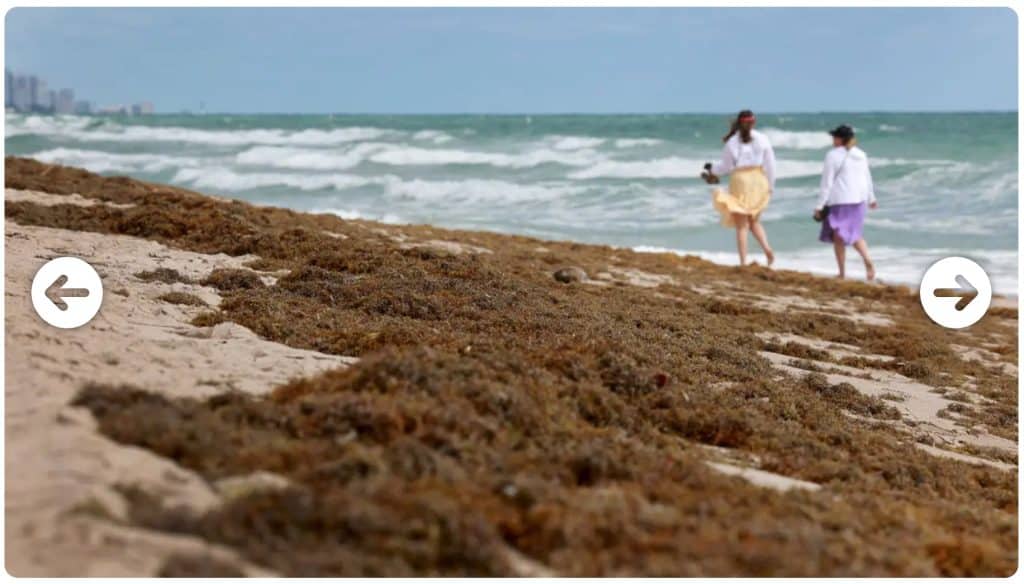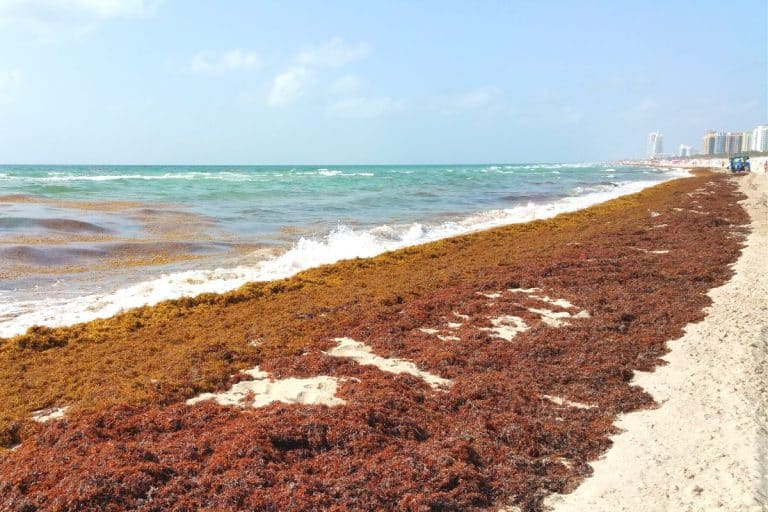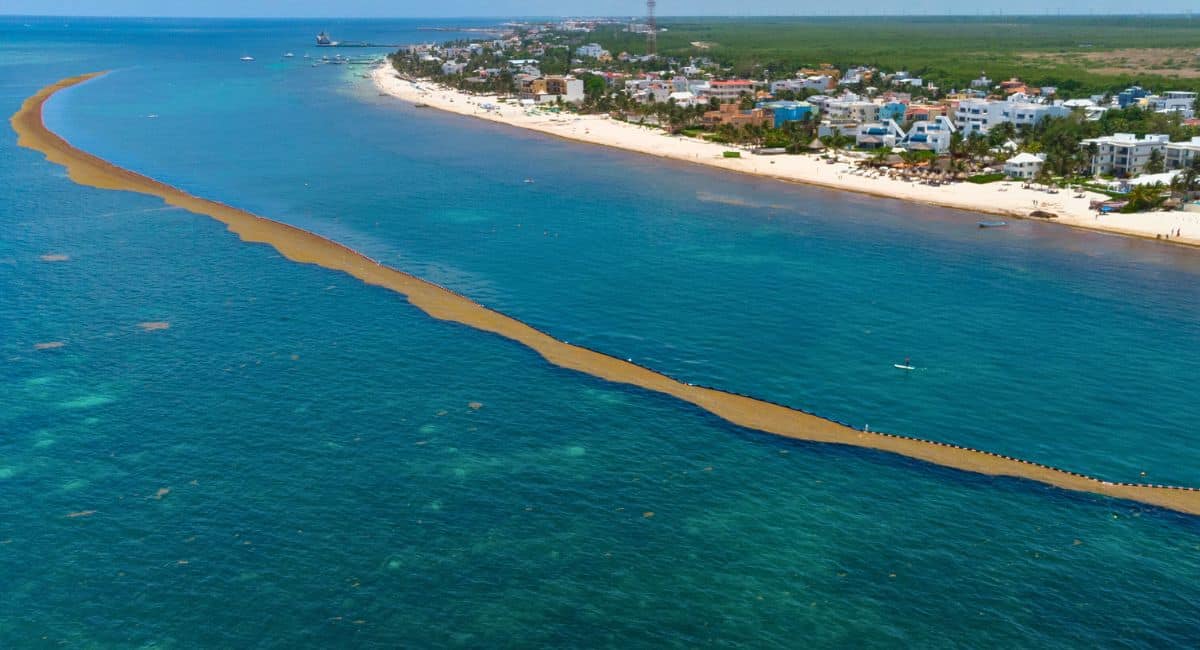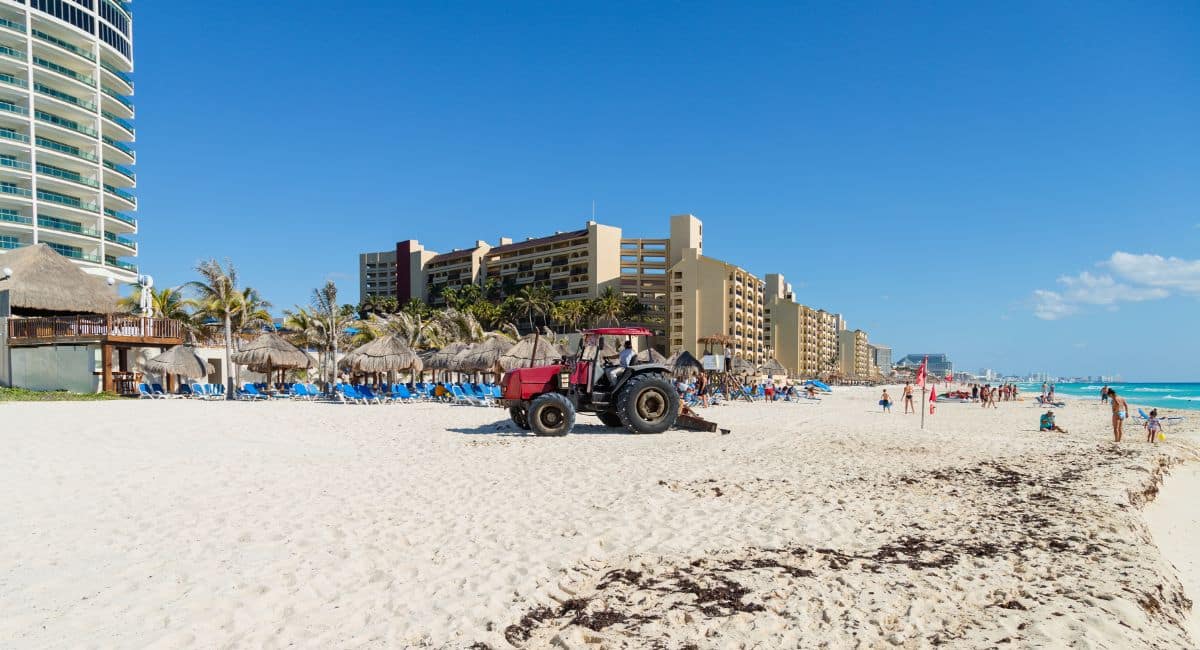Significant amounts of algae have already washed up in the Sunshine State. Experts warn that the worst could be yet to come.
Clumps of brown seaweed have been found in Key West, Fort Lauderdale, and other South Florida communities on normally white sand beaches.
The amount of sargassum in the Atlantic Basin was estimated by experts at the University of South Florida and other institutions to be about 6.1 million tons, the second-highest amount ever recorded in February.
Join our FB group where Florida’s locals and tourists post the latest photos and updates on Sargassum Seaweed in the area
Dr. Brian Barnes, an assistant research professor at the University of South Florida’s College of Marine Science, has been keeping an eye on the algae and believes greater amounts will be found offshore in late spring and early summer.
“Larger amounts should be offshore Florida starting in April through July or so. Most of this, however, will stay offshore. If the currents and winds dictate, a patch may be pushed ashore to impact beaches on a local scale,” Barnes stated.

Although seaweed is not dangerous to humans, it can still have effects, according to the Florida Department of Health. In addition to a horrible odor comparable to rotten eggs, sargassum is inhabited by small organisms that can cause skin rashes and blisters.
Health experts warn against eating kelp because it can be highly contaminated with heavy metals such as cadmium and arsenic.
The brown algae are believed to be beneficial to many marine animals. Scientists believe that the deposits provide food and shelter for fish, crabs, shrimp and other smaller species.
The red tide, which is also having an impact on Florida beaches, especially on the Gulf Coast, is quite different from sargassum.
A dangerous algal bloom known as red tide was first observed in southwest Florida in the days following Hurricane Ian and grew rapidly in early 2023.
Many fish washed up on shore as a result of the ongoing toxic event, and according to researchers, manatees may also have been affected by the high concentrations of the organism known as Karenia brevis.
Although experts have not determined why some years have greater than others levels of algae production, they do point to a number of changeable circumstances, including runoff from significant waterways.
“It’s hard to know causation, but, in general, blooms will occur when you have the right suite of conditions: temperature, light, a seed and nutrients,” Barnes stated.
Aside from being unsightly and unpleasant to smell, seaweed plumes can be quite costly for coastal communities to clean up and potentially deter visitors.
The Global Tourism Resilience and Disaster Management Center predicted that cleaning up Caribbean beaches after a major algae bloom in 2018 would cost more than $120 million, and research revealed that South Florida would experience comparable impacts from a major sargassum year.
A big sargassum occurrence could cost the heavily tourism-dependent region at least $20 million in economic damages and hundreds of local jobs, according to a study done for the Florida Keys and Monroe County.






